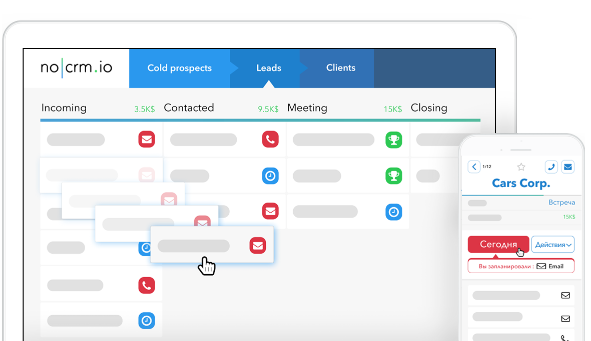The saying “there’s a method to the madness” fits well with the sales industry. At times, it can lend itself to an element of chaos. But selling is an art, and all art forms have a method behind them. Enter sales methodologies.
Many sales techniques have skyrocketed in popularity over the years. From best-selling books to Hollywood movies, the creators of sales methodologies swear by their ability to bring success. And they are right to do so. Each one is an efficient way of selling a product or service.
But dig a little deeper, and it becomes clear that each practise has one common denominator: Customers. The buyer of a product or service is always the most crucial element.

These sales methodologies aren’t necessarily the holy grail of sales success. Yet in an industry where reps have garnered a reputation for selling at all costs, they help place the customer back in the spotlight.
When you delve deeper, it’s clear to see that differences come down to small details. Personal preference will most likely decide which practise a rep chooses.
The one aspect to remember is the importance of the customer’s role and putting yourself in their shoes.
We’ve examined some of the most popular sales methodologies used in today’s world of selling. This isn’t a guide as much as it is a look at how they work and the importance of understanding the customer.
Conceptual Selling

The Method
For Conceptual Selling to work, salespeople must listen to their buyer’s needs. And, if at any point, the rep doesn’t think the product is right for the prospect, they should walk away.
Founders Robert Miller and Stephen Heiman place emphasis on selling as a concept, rather than a goal focused on shifting a product or service. First, reps need information about the buyer—who are they and what do they want from a product/service.
Next, the customer should feel educated about how a solution alleviates their pain points. Once they are educated, the goal is to get a commitment, whether it’s a follow-up meeting or a deal.
Conclusion
Already we are seeing the vital role customer understanding plays in the process. Too often, reps feel that hearing the word “no” indicates failure. By focusing on the concept rather than the product, salespeople move away from the idea of selling at all costs. Instead, the focus is on providing value to their customer.
Sandler Sales Methodology

The Method
For Sandler Sales to work, the seller can never stop analyzing the process of a sale—at every stage of the pipeline. Deals are often lengthy procedures and can take between 6-9 months, which means a hefty amount of evaluation takes place.
When a customer asks a question, reps should respond with a question of their own. On the surface, such a route might seem like tricking the customer. In reality, it’s trying to establish their core needs by finding out more about them and their setup.
It’s a slightly left-field take on the more traditional “convince the prospect to make a purchase” route. The focus is on both parties having an equal interest in a product or service. A rep should always clarify the needs of the prospect. Never assume.
Conclusion
The Sandler Sales method avoids “mutual mystification”, which is where one or both parties expect a call or meeting to go one way. Only to find out it heads in an entirely different direction. The best way to counteract such a scenario, according to Sandler Sales, is by asking counter questions to garner a better understanding of a prospects’ needs.
The Challenger Sale

The Method
Every salesperson fits into one of five personas. At least they do accord the Challenger Sale from Matthew Dixon and Brent Adamson. Those five personas are Relationship Builders, Hard Workers, Lone Wolves, Reactive Problem Solvers, and Challengers.
Of five personality traits, the Challenger is the most common. It makes up 40 percent of top-performing reps according to Dixon and Adamson’s research. The Challenger always looks at the bigger picture.
What is the bigger picture? Challengers don’t emphasize the core product. Instead, they detail a customer’s business and find ways to teach them something new about how their company can make a more significant impact in its industry.
Conclusion
Challenger Sales focus on the rep teaching insight into their prospect, tailoring a product or service to fit their needs and taking control of the whole process. They can only do this if they gain a deep understanding of their prospects’ business. And to do that, they need to listen.
CustomerCentric Selling
Many people – including sales reps – believe their job is to convince someone to buy what they’re selling. CustomerCentric selling flips that ideal and firmly places the customer’s needs at the heart of the process.
It’s perhaps the most transparent sales methodology when it comes to listening to the customers. With CustomerCentric selling, reps are viewed as consultants. They encourage prospects by asking about their needs, rather than providing them with a set of options.
Customers aren’t bothered by a rep’s personal needs or targets; they worry about their problems and needs. The idea is to speak about “you” and “your” when talking to a customer, rather than “me” and “our”.
Conclusion
The method works best when focusing on the buyer’s timeline instead of the seller’s. Rather than concentrating on persuading the buyer to make a purchase, the onus should be on empowering them to feel like the product will solve one of their needs.
SNAP Selling

The Method
Everyone always seems busy. While technology has provided many benefits; it’s also given us an excuse to be wholly preoccupied. In a world where no one has any time, how do you even begin to think about reaching out to a prospect and sell a product they don’t know exists?
Customers don’t have the time to think about the worth of you’re offering, or how they’re going to implement it in their setup. Enter SNAP selling, a sales methodology aimed at the modern-day buyer. SNAP stands for: Keep it Simple, be iNvaluable, alway Align, and raise Priorities.
Reps use the SNAP methodology to quickly answer any concerns a customer has in a way that makes the buyer think they’ve come to a definite conclusion without any input. Again, the focus is very much on making the customer the driving force.
Conclusion
On the surface, the idea of convincing a rep to buy something without knowing you are doing so sounds manipulative. If done correctly, it’s merely smart selling. The key to successfully using SNAP is to genuinely believe the product is a great fit for the prospect and find a solution that improves their current setup.
Value Selling

The Method
Value Selling details a map of the customer process and allows reps to make better decisions on who is most likely to buy. They need to qualify the prospect by learning as much about them as possible so they can decide whether they are worth pursuing.
You are encouraged to build a process for each sale, rather than customizing deals. This helps reps improve their overall selling skills. The idea is to create a plan that works for both the buyer and the seller with complete transparency along the way.
Instead of focusing on the product or service, the idea is that buyers will be more inclined to buy if they see the actual value. Like many other sales methodologies, it’s essential to understand their core needs to create a feeling of true value.
Conclusion
Using the Value Selling methodology requires asking documented questions to understand the prospects’ needs and mapping out a plan of action to close the deal. The chances of conversion increased if a rep can show the true value of the product to the buyer’s company.
The Right Sales Methodologies
It might sound obvious to keep drilling home the point about centralizing the customer in the process. But some reps still place themselves or the product at the forefront of a deal. A product or service is only as good as the person’s it’s being sold to.
These sales methodologies have become famous because they work. Whether you are a sales manager wanting to implement a structure for your team, or a salesperson looking for inspiration, these methods can help you decide on the best route.
It’s important, however, not to get carried away with the method as the be-all and end-all. The most important focus will always be on the customer and providing value. Before choosing an approach, examine your target audience and see which one you feel fits best.
There are no set rules, and you can even combine some methodologies if you feel the fit is right for your would-be clients. Use these sales methodologies to help convert deals and craft a sales process that works for you.
But most importantly, take the time to listen to your client and appreciate their needs.


